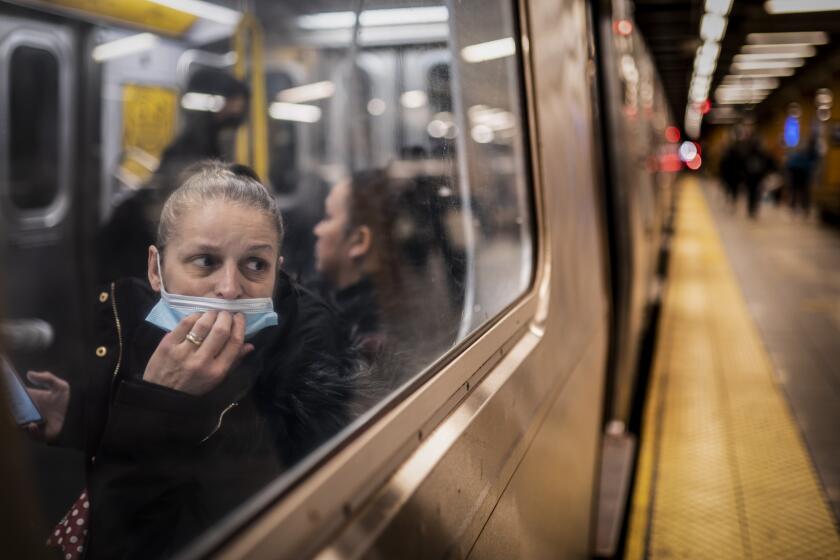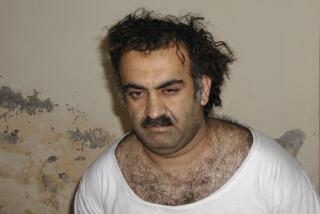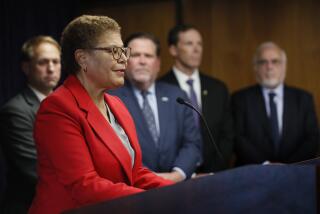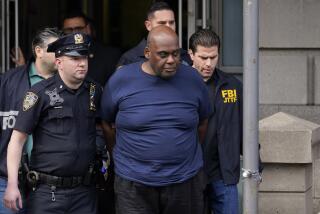‘Prophet of Doom’ pleads guilty in Brooklyn subway attack
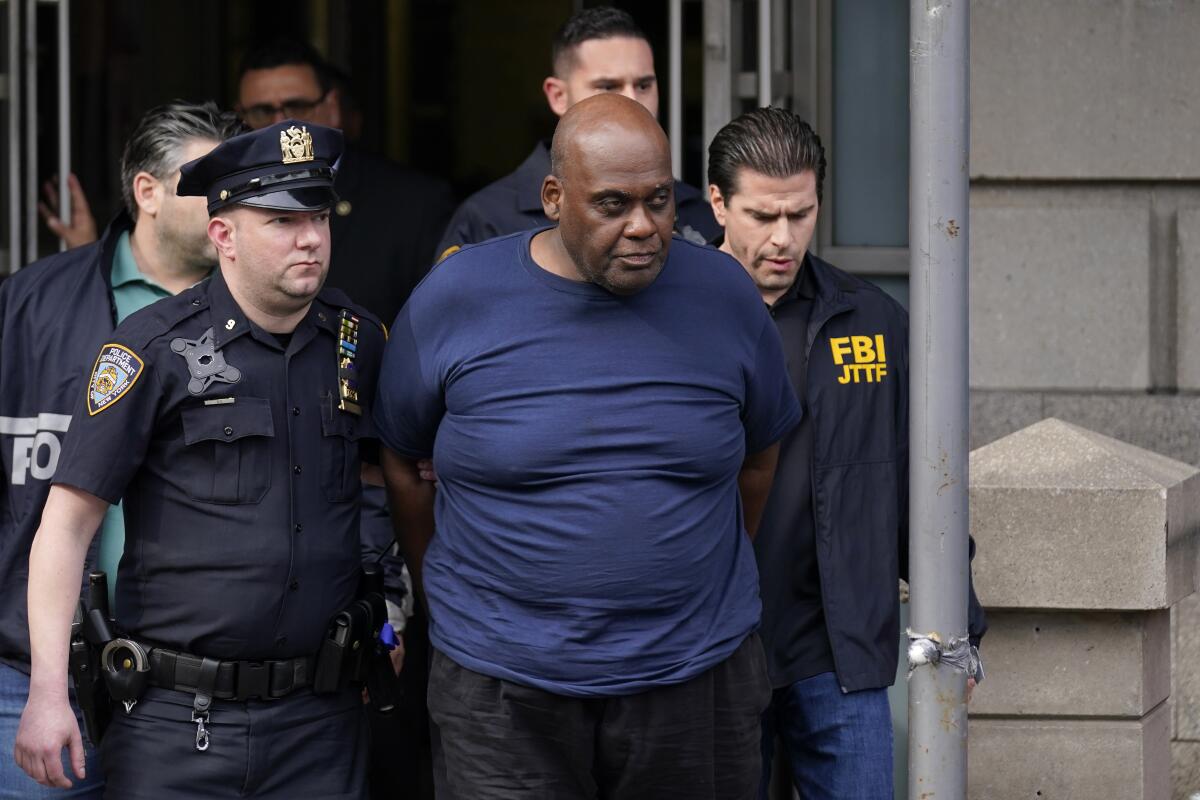
- Share via
NEW YORK — A man who opened fire on a Brooklyn subway train last year, wounding 10 passengers in a rush-hour attack that shocked New York City, pleaded guilty Tuesday to federal terrorism charges.
Frank James, 63, who posted online that he was the “Prophet of Doom,” admitted in Brooklyn federal court to pulling the trigger on a Manhattan-bound train as it moved between stations on April 12, 2022 — an assault that prosecutors said was “intended to inflict maximum damage at the height of rush hour.”
James, wearing a beige jail jumpsuit and reading from a prepared statement, said that he intended only to cause serious bodily injury, not death, but that he knew his actions could’ve been lethal.
Dressed as a maintenance worker, James fired a 9-millimeter handgun at least 33 times after setting off a pair of smoke grenades — wounding victims ranging in age from 16 to 60 in the legs, back, buttocks and hand as the train pulled into a station in Sunset Park. He then fled in the haze and confusion, setting off a 30-hour citywide manhunt that ended when he called the police on himself.
James pleaded guilty to all 11 counts in his indictment, including 10 counts of committing a terrorist attack against a mass transit system — one for each wounded passenger. The terrorism charge carries a maximum sentence of life in prison. The other charge — firing a firearm during a violent crime — has a mandatory minimum sentence of 10 years in prison.
Prosecutors are seeking to put him in prison for decades. His lawyers — arguing that his conduct amounted to aggravated assault, not attempted murder — said he shouldn’t serve more than 18 years. James doesn’t have a plea agreement.
Previously, he vowed to fight the charges and refused to leave his jail cell to appear at an earlier court hearing, leading Judge William F. Kuntz II to issue an order instructing U.S. Marshals to use “all necessary force” to ensure that James showed up to Tuesday’s plea hearing.
Several victims attended the proceeding, but none wanted to talk to reporters. James did not express remorse, but said he plans to do so when he is sentenced, probably in the summer.
“Mr. James has accepted responsibility for his crimes since he turned himself in to law enforcement,” James’ lawyers, Mia Eisner-Grynberg and Amanda David, said in a statement. “A just sentence in this case will carefully balance the harm he caused with his age, his health, and the Bureau of Prisons’ notoriously inadequate medical care.”
If the case had gone to trial, prosecutors said evidence would’ve refuted James’ claim that he intended only to injure, not kill. James had been planning the attack for at least four years and made a trial run a few months prior, Assistant U.S. Atty. Sara Winik said.
James set off smoke grenades before shooting so that passengers would flee to one side of the subway car, allowing him to shoot them more easily, Winik said. The trajectory of his gunshots showed he was aiming “center mass” for maximum lethality, she said.
The attack upended the ritual of the morning commute, “endangering the lives of countless New Yorkers who rely on the safety of the subway system every day,” Winik said.
Before the shooting, James, who is Black, posted dozens of videos online in which he ranted about race, violence and his struggles with mental illness, sometimes adopting the moniker “Prophet of Doom.”
Technology to scan large numbers of people quickly for weapons exists, but installing such a system in the New York subway would be challenging.
James was arrested in Manhattan a day after the shooting after calling a police tip line to say where he was. Police were already searching in the area where James was located after a sharp-eyed high school photography student called in a tip about a man, believed to be the suspect, sitting on a bench with a duffle bag.
Prosecutors said a trove of evidence connected James to the attack. His bank card, cellphone and a key to a van he had rented were found at the shooting scene. Officers also found the handgun they said was used in the shooting; tracing records show James purchased the gun from a licensed gun dealer in Ohio in 2011.
In court papers, prosecutors suggested James had the means to carry out more attacks, noting that he had ammunition and other gun-related items in a Philadelphia storage unit. The New York City native had been living in Milwaukee and Philadelphia prior to the shooting.
More to Read
Sign up for Essential California
The most important California stories and recommendations in your inbox every morning.
You may occasionally receive promotional content from the Los Angeles Times.
